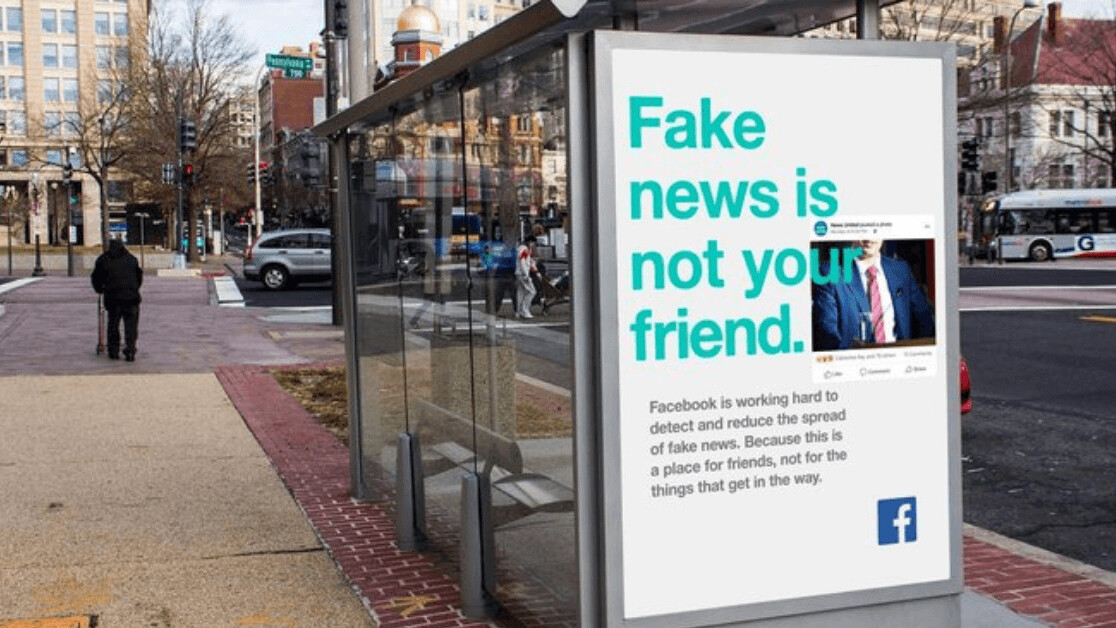
Facebook is using billboards to demonstrate their commitment to fighting fake news. Uber is running TV spots to illustrate the company’s commitment to doing good.
Once considered disruptors, digital companies are now using the same strategies oil and tobacco companies used back in the ’90s to project the illusion of an optimistic future — while their design teams are still tied to aggressive, revenue-driven, short-term metrics.
Tech companies have often been on the wrong side of the conversation for the past few years, by creating tools and systems that support unhealthy business practices in the pursuit of growth.
For decades, we have been solving problems and running businesses that took advantage of laws that were not quite ready for digital services and social media.
That worked well for some time, but we have now reached a point where we can’t consider these once new digital services to be outsiders. Their impact is felt in the economy, in the politics, and in people’s lives.


To clean up their image, companies are resorting to the traditional model of running branding campaigns that attempt to make things look better than they actually are. But once the damage is done, it gets trickier to redesign an entire business or service.
We can’t think of people like we think products; we cannot fix human behavior in a two-week sprint.
The damage these companies are creating in the world around us serves as a reminder of how much tech needs to improve and how much we have failed so far. As Erika Hall, co-founder of Mule Design, said: “Pleasant to use doesn’t equal healthful any more than pleasant to eat does.”
Building a healthy business is a long-term endeavor. However, if sustainability and positive impact are not at the core of the company, the design approach will be constrained by a limited scope and the metrics of their day-to-day projects.
It took businesses a while to shift their focus from being business-centric to being user-centric. We are now quickly approaching a new era where the companies that win are the ones who can shift from user-centric to society-centric — from singular to plural.
The golden handcuffs of Silicon Valley
The comfort of our design jobs, especially in Silicon Valley, has, in many ways, limited our power to advocate for the right thing.
We are comfortable in our expensive chairs, busy pleasing our internal stakeholders and pretending we can keep our responsibilities as citizens out of our work, and the impact of our work out of our personal lives. For a long time, we even ignored harassment issues in our offices.
But no longer. It’s time we reach beyond our short-term goals and metrics to start discussions about the broader impact of our decisions.

But I don’t work in a big tech company…
While big tech companies are constantly in the spotlight, all designers are in the same situation. The size of your company doesn’t matter, it’s the mindset that you and your employer have that impacts the work you produce. A good question to ask is: what would be the impact of my design decisions if my product had one billion users?
‘Focused on improving people’s lives’ sounds great on our Linkedin profile, but it’s hard to put that in practice. The reality of our work is way less glamorous than that.
We still have responsibilities after 5 pm
What if, instead of working on unsolicited redesigns after hours, we put our craft to work in other initiatives and sectors that are in need of designers? Many non-profits out there can benefit from our thinking.
What if, instead of coming up with a better version of the “double-diamond model,” we mentored new designers and other professionals and guide them through applying it to their own careers?
As designers in 2019, we have to take a stand on what we believe in and what we want for the world. We might not have the answers yet, but we can add a lot of value by asking the right questions. The time to start fixing things is now.
Get the TNW newsletter
Get the most important tech news in your inbox each week.





